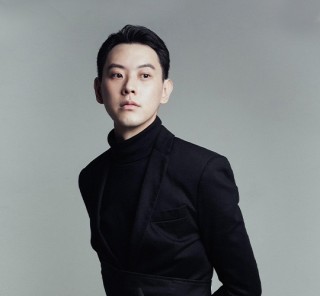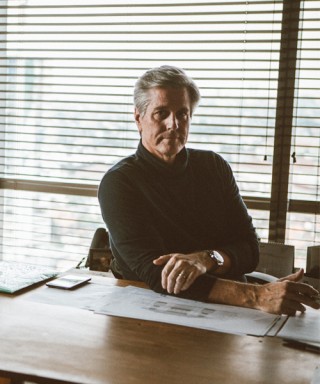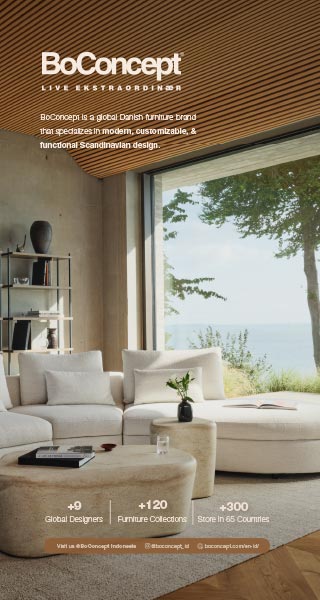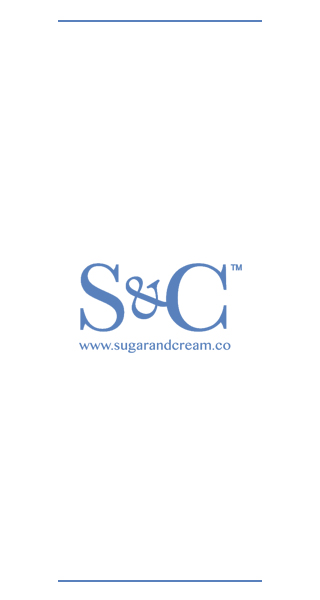
Indisciplinato
Published by Sugar & Cream, Monday 11 July 2016
Text by Nicola Trezzi, Marco Cassani
Photography by Benny Kurniadi, Emanuele Brai, Evelyn Pritt
Like Cerberus, the animal guarding the gates of the underworld in Greek mythology, Marco Cassani’s practice is three-headed: his practice as artist, his role as Lucie Fontaine’s employee – for whom he developed a unique programme at her Balinese branch, Kayu − and, last but not least, his position as founder and CEO of VAPRICO (Value Prism Corporation), an art project organized along the lines of a venture capital fund that aims to highlight the particularities of mankind, collecting readymades as a form of intellectual multitude and as artistic creation. Omnitasking, schizophrenic and full of contradictions, this position brings a myriad of possibilities. It not only questions the understanding of what it means to be an artist today, but also triggers a larger discourse about the lack of distinction between labour and leisure (the very base of cultural production), while reaching its most paradoxical and therefore contemporary state only through positions similar to that of Cassani. The desire to see reality and fiction as continuously intertwining is another important aspect of Cassani’s practice. If his employment with Lucie Fontaine can serve as an introduction, the real core of this position is to be found in VAPRICO, which the artist has been developing since 2014. Within this territory, Cassani has created a series of objects − possibly classifiable as artworks, props, tools, products, or even still lifes − that encapsulate labour or the possibility of labour. Presented through a carefully orchestrated series of actions, including photoshoots that echo Brancusi’s studio (currently reconstructed in front of the Centre Pompidou in Paris) and a semi-fictitious newsletter, VAPRICO reveals the possibility of questioning once again the state of the arts, but this time within a context far from the comfort zone of conceptual art. In other words, it is important to stress the fact that the artist has developed this project and his language within the context of Indonesia, a country whose dynamic and vibrant art scene is still rooted in certain understandings and conventions of what it means (or is supposed to mean) to be an artist today. Aware of this condition, Cassani’s first exhibition at OFCA International in Yogyakarta becomes a conscious action that needs to be understood within the layers of Indonesian, and, even more deeply, of Balinese society, where the artist lives as an expat. Is the artist perhaps standing at the gate, connecting a conceptual underworld, or even more specifically his Italian heritage (Arte Povera), with a still largely idyllic and pastoral land (Bali)? Are these three heads meant to keep vigil over the degree of complexity that characterizes the current state of reality? Whether this is true or not, Cassani’s artistic practice opens up our imagination and makes us doubt the status quo.

The interview with Marco Cassani by Nicola Trezzi
1) After receiving a formal education first at the Liceo Artistico Umberto Boccioni (which I also attended at the same time, although in another class) and then in the painting department of the Accademia di Belle Arti di Brera (which I also attended at the same time, but in another department), you developed a quite radical and conceptual body of work. How did this transformation take place?

The transformation of my artistic practice – into, as you mentioned, a ‘radical and conceptual body of work’ – started when I moved to Indonesia in 2009. There were three aspects that influenced me to do so. The first one is Bali. For me, Bali represents an altrove (elsewhere) that offers me the time and peaceful state of mind for researching, studying and looking at our society from a distance, in particular at contemporary art. During my initial research, I became interested in the conceptual approach to art and the artists related to it. I then realized that painting as a medium couldn’t help to express my ideas any longer. The second aspect was meeting two artists, Edmondo Zanolini and Luigi Ontani. Edmondo Zanolini is an Italian artist based in Bali with a performance background. His artistic practice and his complete freedom gave me a totally different point of view of life, and consequently of art. Our connection has been given me the support to discover the deeper aspects of human being and helped me to follow my desires and ‘perversions’ and address them in my work. I collaborated with Luigi Ontani in 2015 on the Kayu project in Bali. Through his memories of the 1970s during the years of the ‘Attico’, in particular through his stories of Fabio Sargentini, he brought me closer to the conceptual artists who were operating in those years. Luigi’s life stories brought those past events alive and gave me the chance to reconnect with my country of origin, Italy. The third and most important aspect is my awareness of Lucie Fontaine’s practice, followed by an encounter with one of her employees. Her approach to art has been a deep inspiration and has been close to my ideas. I felt immediately at home and it gave me the self-confidence to work and experiment with new ways of ‘doing’ art.

2) You have been living in Bali for a few years now. What is your relationship with the place? Organic? Alienating? Does it influence your work, and if so, in which ways?

I have been living in Bali for more than six years but I am still a foreigner. I am still an outsider in relation to Balinese culture. I think this is because Bali is one of the few places in Indonesia where the traditional culture still remains strong. As part of a country that was colonized for more than three hundred years, this is a remarkable thing. A population living under a foreign power for such a long period has developed tactics in their daily lives and manoeuvres within the enemy’s field to survive and to keep their culture alive. The distance gives me the role of a constant spectator and enables me to observe structures in society. The tactics and creative resistance that people have developed in all these years are fascinating. This reality inspires me to see the concept of labour in a different way. It becomes an alternative production of subjectivity, which not only resists power but also seeks autonomy from it.

3) Bali in particular and Indonesia in general have a very specific approach to the visual. The art scene is very dynamic and more and more connected to the outside; at the same time not many foreign artists live in Indonesia – I can only think of Ashley Bickerton – and integration is not an easy task. What is your position regarding this issue?

Bali and Indonesia are still developing their own identity and also their art scene. I think the country will soon be opened to the international art world and will integrate international artists into the local scene. In my opinion, strong institutions such as galleries, museums and foundations are fundamental elements to help artists in the process of integration. Stronger institutions will be in Bali soon and will help to make this island a great spot for contemporary art and inspire foreign artists to live here. The Kayu project, Lucie Fontaine’s branch in Bali, founded in 2014, wants to be at the forefront of this process.

4) Painting, which is the medium in which you were formally trained, remained in your work, as we can see in the project Les Demoiselles d’Orient – in which you engaged with sex workers and asked them to make a portrait of you (naked) instead of offering their bodies and time for money. What is your understanding of this language and how do you think it will remain in your practice, which is becoming more and more conceptual and instruction-based?

I have always seen painting as a tool to represent something. This aspect still exists in my recent works, in particular, as you mentioned, in Les Demoiselles d’Orient. The title of the project refers to Picasso’s painting Les Demoiselles d’Avignon, in which the artist represents five nude female prostitutes from a brothel on the Carrer d’Avinyó in Barcelona. During research over a period of more than two years (2012–2014) in various locations in Asia: Bali, Surabaya, Yogyakarta, Jakarta, Bangkok, Phnom Penh, I reversed the ordinary situation of prostitutes’ work routine into a new form of labour by inviting them to draw me naked. I have collected more than one hundred drawings made by sex workers. I was interested in seeing a different point of view: from the traditional point of the artist to the point of the model, using the painting as a mirror. In particular, here, the drawing is a tool for the sex workers to represent their individuality. There is another aspect of painting which has been appearing more and more in my recent artistic practice: painting as a ‘condition of possibility’, the delimited space that allows the possible circumstances to exist. This aspect allows me to consider daily work again as structure delimited by its rules, such as working time, working space, working rules, and so on. From this point of view, the job becomes a space for possible interference and artistic creation.
5) In your last project you engaged with the ‘village madman’ and asked him to create banknotes for you, which became symbolic of a parallel order with its own social rules, rights and currency (made by a single person). Within such an appropriative act, similar to Les Demoiselles d’Orient, what kind of role does the actual visual and pictorial aspect play?
My approach here is actually different from in my project Les Demoiselles d’Orient, in which I asked and paid sex workers to draw me naked. In the money project I didn’t ask the ‘village madman’, an outcast of a Balinese village who wanted to become an artist but was forbidden to do so by his parents, to draw the banknotes for me. I met him by chance when he was wearing his mask during the ogoh-ogoh parade in his village and decided to visit him in his house. Later, I bought the mask from him. There I discovered the banknotes together with other objects, such as the masks and talismans that he had made for himself. I then bought them from him. During our following meeting, I understood that the banknotes and his other objects represented the tactics that he used against society to survive. In particular, the banknotes were drawn in accordance to an intriguing and complex mathematical system and language code that he had created. He used visual and pictorial aspects from his Balinese culture to help him to camouflage the production of our economic system into his own version of economic system, visualizing the contents of his singularity.
6) In 2014 you founded VAPRICO (Value Prism Corporation), ‘an art project organized along the lines of a venture capital fund that aims to highlight the particularities of mankind, collecting readymades as a form of intellectual multitude and as artistic creation’. You mention the Arte Povera movement – whose manifesto, written by Germano Celant, looks at issues belonging to society at large but which are completely anti-capitalist – as one of its main influences and yet you borrow elements of neoliberal economics and act as VAPRICO’s ‘CEO’. Can you explain? (Full disclosure: Celant now works for the Prada luxury brand).
The influence of Arte Povera is not a deliberate one; it’s indirect and organic, partly because of my DNA as an Italian. Arte Povera makes me interested in bringing my artistic practice closer to social aspects such as daily work, politics and the economy. But the way I approach the social aspect is different from the approach of Arte Povera. The strategies for communicating with the structures of power have changed. If during the period in which Arte Povera was born, the revolution was seen as a direct clash with symbols of power, in our current period, the struggle appears within the power structure as continuous sabotage. I think this has happened because globalization has resulted in the incorporation of our daily life into the model of current systems of power. The adoption of neoliberal and capitalist elements in VAPRICO is designed to underline this aspect. Our common language is becoming increasingly similar to the capitalist one. The model of the corporation is becoming more and more frequently adopted in our lives, in the way we relate to others.
7) Last but not least, I would like to ask you about Lucie Fontaine, of whom you have been (like me) an employee, and specifically in charge of her Balinese branch Kayu. Can you explain Kayu’s mission, site, and maybe share some insider stories about this amazing project, which has presented incredible commissions by Luigi Ontani, Radu Comșa and Ashley Bickerton and a group show that mixed work by Indonesian, Italian and international artists with furniture selected from the collection of the owner of the space where Kayu is located?
After a few years of living in Bali, I started to feel the need to connect with international contemporary art practices. I wanted to create a reality similar to the dream of the character Fitzcarraldo in one of Werner Herzog’s films: an opera theatre inside the jungle. I was curious to see contemporary artworks displayed in a new context and how the new context could affect contemporary art. I wanted the new context to be similar to an altrove (elsewhere), in the middle of nowhere surrounded by nature, a place between magic and dreams in complete opposition to the usual white cube gallery and the environment that surrounds it. It was my personal project for quite some time, but I had always felt that there was something missing, so it had been in a state of incubation for quite a while. An encounter with one of Lucie Fontaine’s employees provided the spark that brought Kayu (‘wood’ in English) into being. Lucie Fontaine gave me the possibility to connect Bali with the international intellectual world; showing me amazing artists and giving the project the professional aura that distinguishes her work by including Kayu as her Balinese branch. Although it is far from being in the jungle, Kayu was born within the Balinese natural world and hosted in an unusual building, an antique Joglo, an old Javanese wooden house inside a Balinese/Javanese traditional complex, which hosts one of the biggest collections of masks and puppets in Indonesia. This new environment gave me the inspiration to create a programme of events at Kayu. The intimacy of the place, the fact that the place is the house for the masks, the nature, the exotic environment, are all elements that later influenced my choice of which artists to invite.
Kayu became a platform to support the growth and awareness of contemporary art in Indonesia through experimental and conceptual projects. By actively facilitating artistic activities and operating as an incubation facility, it provides opportunities for information and knowledge exchange between Bali, Indonesia and the external art world. Since the inaugural project ‘Domesticity V’ in 2014, Kayu has been developing projects with contemporary artists such as Claire Fontaine, Corrado Levi, Jessica Warboys, Agnieszka Kurant, Entang Wiharso, Fendry Ekel, Jumaldi Alfi, Luigi Ontani, Radu Comșa and Ashley Bickerton.The way in which I operate with Kayu is essentially similar to the way I approach my artistic practice: researching, discovering, selecting and arranging. For this reason, I consider Kayu as an extension of my artistic practice. It was not by chance that Kayu was born in the same year as VAPRICO and incorporates human relations and artistic products.
It is always exciting to develop new concepts and collaborate with the invited artists.
In particular, during the organization of Luigi Ontani’s exhibition, there was a beautiful moment during the night that we spent in front of his Ogoh Ogoh (Balinese statues with the features of mythological creatures, mostly demons). Luigi, as always, was wearing one of his shiny silk robes – in perfect harmony with Kayu’s purpose – creating a strong contrast with the traditional environment surrounding us.
It was a mixture of Ontani’s life stories, of creation, of simple village life, of Balinese artisans, of mainstream music and of local alcoholic drink, arak.
 4.20K
26/12/2025
4.20K
26/12/2025
WHEN LEGO BECOMES A HOLIDAY LIFESTYLE GIFT
From F1-inspired builds to artful designs, LEGO invites adults to slow down, create, and reconnect this holiday season.
read more 1.69K
26/12/2025
1.69K
26/12/2025
BACHA COFFEE’S HOLIDAY MENU - A SYMPHONY OF FLAVOUR AND FINESSE
Savour the Season: Bacha Coffee unveils its Holiday Menu - a symphony of flavour and finesse
read more 11.01K
03/12/2025
11.01K
03/12/2025
LIVING DIVANI ILLUMINATES THE FESTIVE SEASON IN SHADES OF DEEP RED AND LUMINOUS SILVER
Living Divani illuminates the festive season in shades of deep red and luminous silver, reimagining its iconic designs with festive radiance.”
read more 10.31K
15/12/2025
10.31K
15/12/2025
CIERRE1972 PRESENTS BELT AND MAC: TWO ARMCHAIRS DEFINED BY CONTEMPORARY ELEGANCE
Cierre1972’s Dynamic Duo, Defined by Contemporary Elegance
read more 81.67K
10/01/2025
81.67K
10/01/2025
W RESIDENCE IN SOUTH JAKARTA BY MICHAEL CHANDRA
Michael Chandra, founder of MNCO Studio Design has created the W Residence with an aesthetically pleasing, practical, and pleasant home from all...
read more 44.46K
11/07/2025
44.46K
11/07/2025
PELUNCURAN PERDANA LEGANO HOME MENGGANDENG AGAM RIADI DI ST REGIS RESIDENCE JAKARTA
Peluncuran perdana LEGANO HOME menggandeng Agam Riadi di St. Regis Residence Jakarta: menyatukan kemewahan dan jiwa dalam sebuah ruang.
read more















